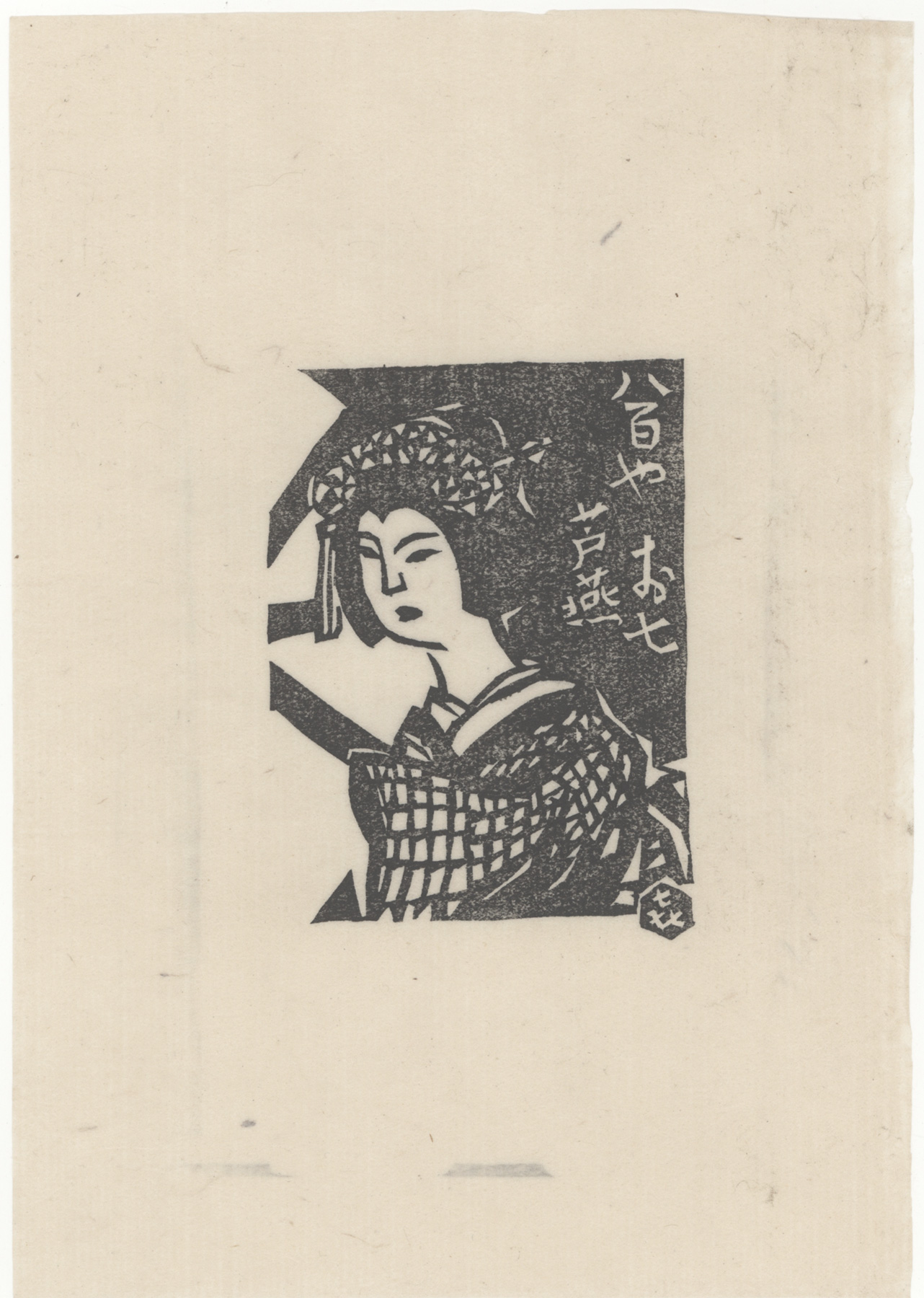About This Print
This print depicts Yaoya Oshichi ("greengrocer's daughter), played KataokaRoen V (1910-1993) in act VI, Yaoya, from the kabuki drama Date musume koi no hikanoko.This is the true story of a young girl who was executed for arson in 1683. The fire was extremely destructive and she was executed by being burned alive. Her story was so striking that it was soon told in literature in Ihara Saikaku’s “Five Women who Loved Love” and a series of puppet plays. Eventually Oshichi became one of the iconic roles of kabuki, with all kinds of conventions for portraying her. For example, her distinctive underkimono with in crepe silk with white spots and stripes of red and blue seems to have been the invention of an onnagata actor. This caused a fashion craze and even today, this is the standard costume for Oshichi.
Writers: Suga Sensuke, Matsuda Wakichi and Wakatake Fuemi
Other names: Yagura no Oshichi; Yaoya Oshichi
First performed: April 1773 at Kita Horie-za, Osaka
Today theatres present only the sixth act of this play, which presents the love story of Yaoya (Greengrocer) Oshichi and Kichisaburō, page at the Kisshoin Temple.
Because of the loss of a famous heirloom sword, which had been returned to the Imperial Palace by the young lord of the Takashima family, the sword's guardian, Yasumori Genjirō, must assume responsibility and commit ritual suicide (seppuku). His son Kichisaburō has become a page at Edo's Kisshoin Temple in the Komagone district; having heard the news of his father's death, he is searching for the sword. Kichisaburō had fallen in love with Oshichi when her family had taken refuge at his temple after a fire had destroyed their house. The time limit for the sword's recovery expires on the following day, and Kichisaburō is resolved to die. Oshichi learns that the sword is in the hands of Kamaya Buuhei. She must let Kichisaburō know this, but night has fallen and the wooden gates between the streets of Edo are shut. Understanding that her punishment for this act will be to be burned at the stake, she climbs the fire tower and rings the bell, hoping to get the gates opened.
The Actors in the Print
Print Details
| IHL Catalog | #1383 |
| Title | Kataoka Roen V as Yaoya Oshichi in Date musume koi no hikanoko at the Mitsukoshi Theater |
| Series | Mitsukoshi Kabuki Hanga 三越歌舞伎版画 [untitled series of prints for the Mitsukoshi Theater 1948 and 1949 kabuki seasons] |
| Artist | Sasajima Kihei (1906-1993) |
| Signature | not signed |
| Seal |  |
| Publication Date | 1948 |
| Publisher | likely Mitsukoshi Gekijō or the artist |
| Carver | self-carved |
| Impression | excellent |
| Colors | excellent |
| Condition | excellent - minor handling/printing creases |
| Genre | sosaku hanga; kabuki-ga |
| Miscellaneous | |
| Format | |
| H x W Paper | 7 9/16 x 5 3/8 in. (7.6 x 13.7 cm) |
| H x W Image | 3 1/4 x 2 1/2 in. (8.3 x 6.4 cm) |
| Collections This Print | |
| Reference Literature |


